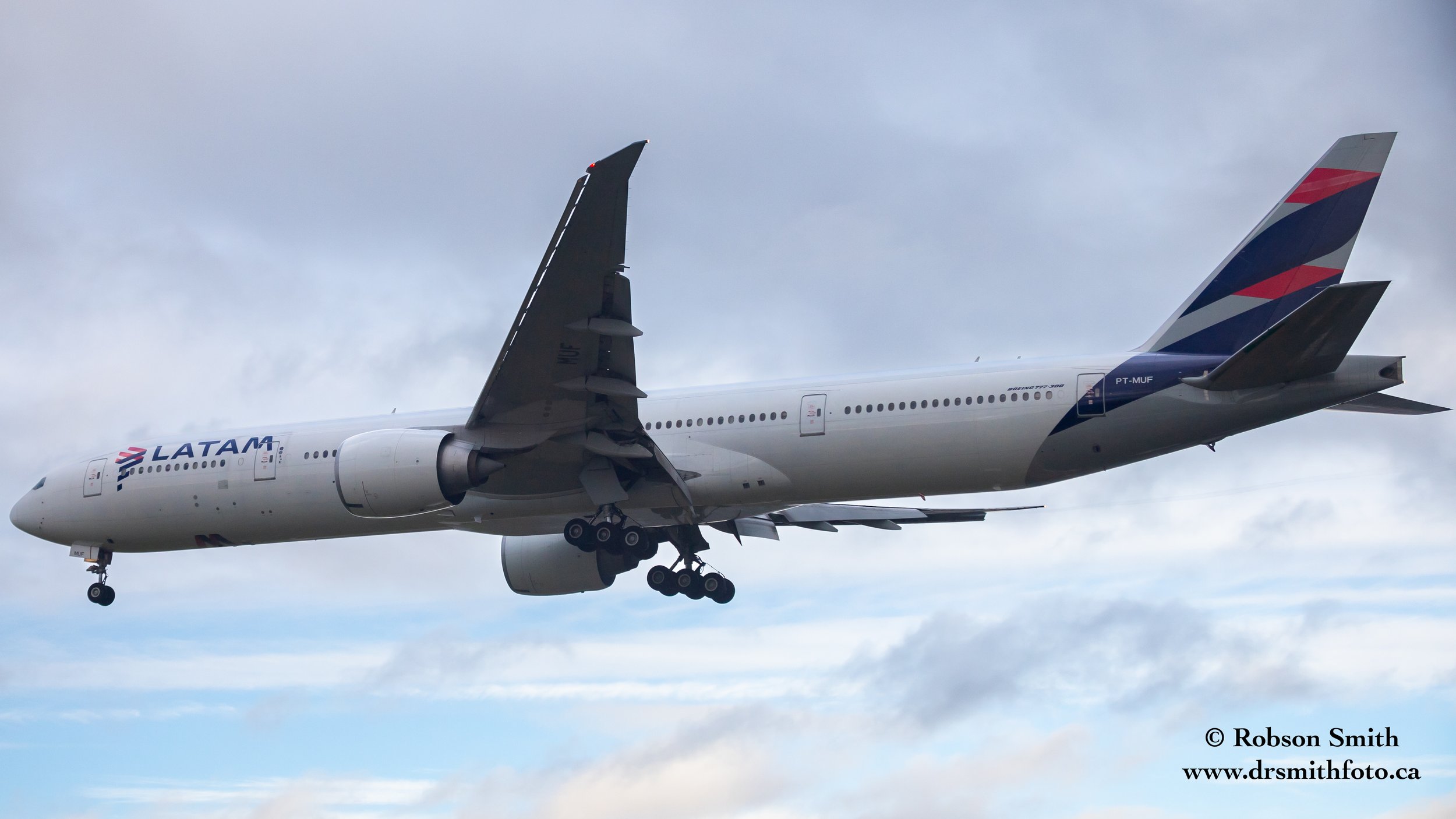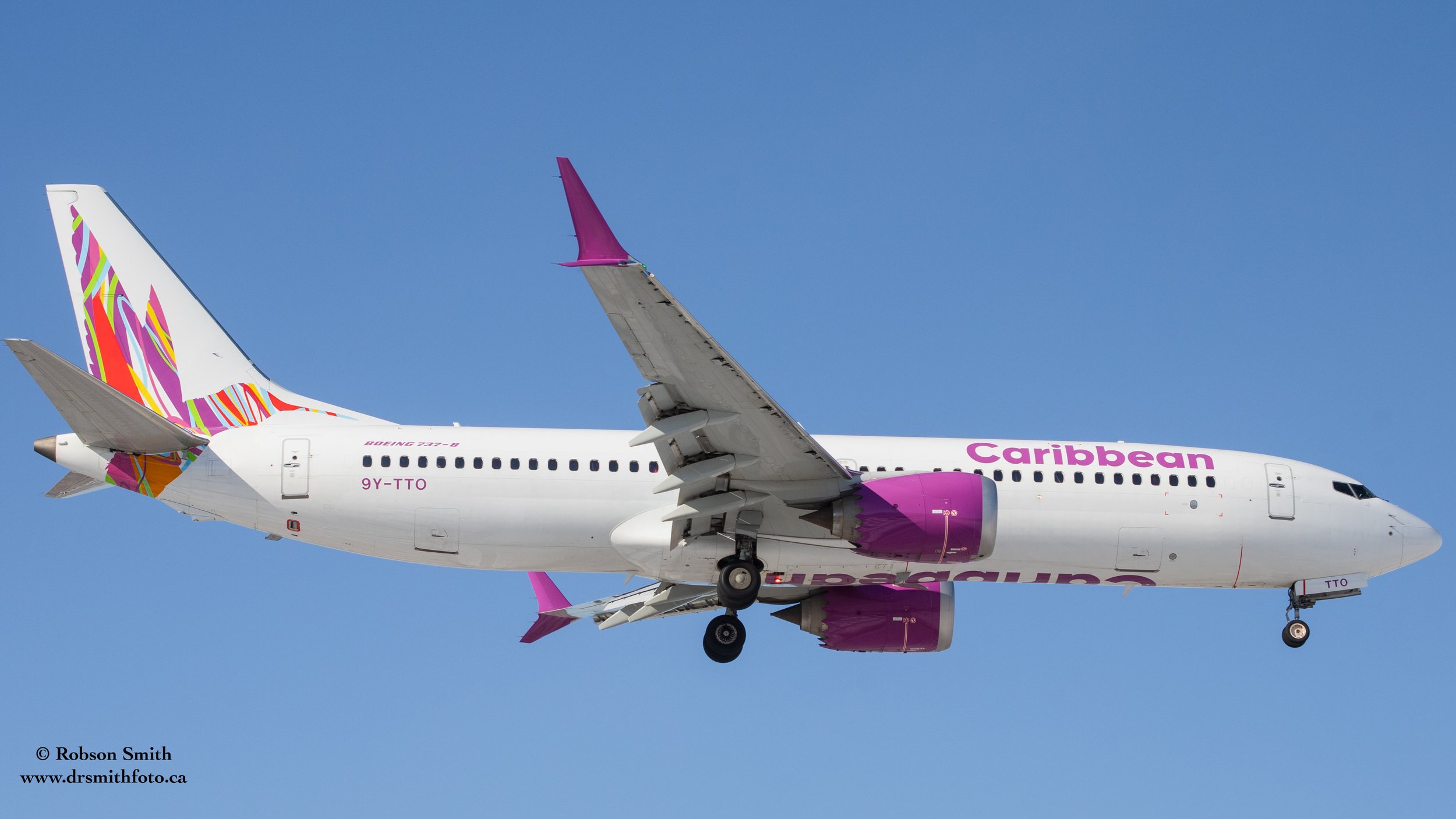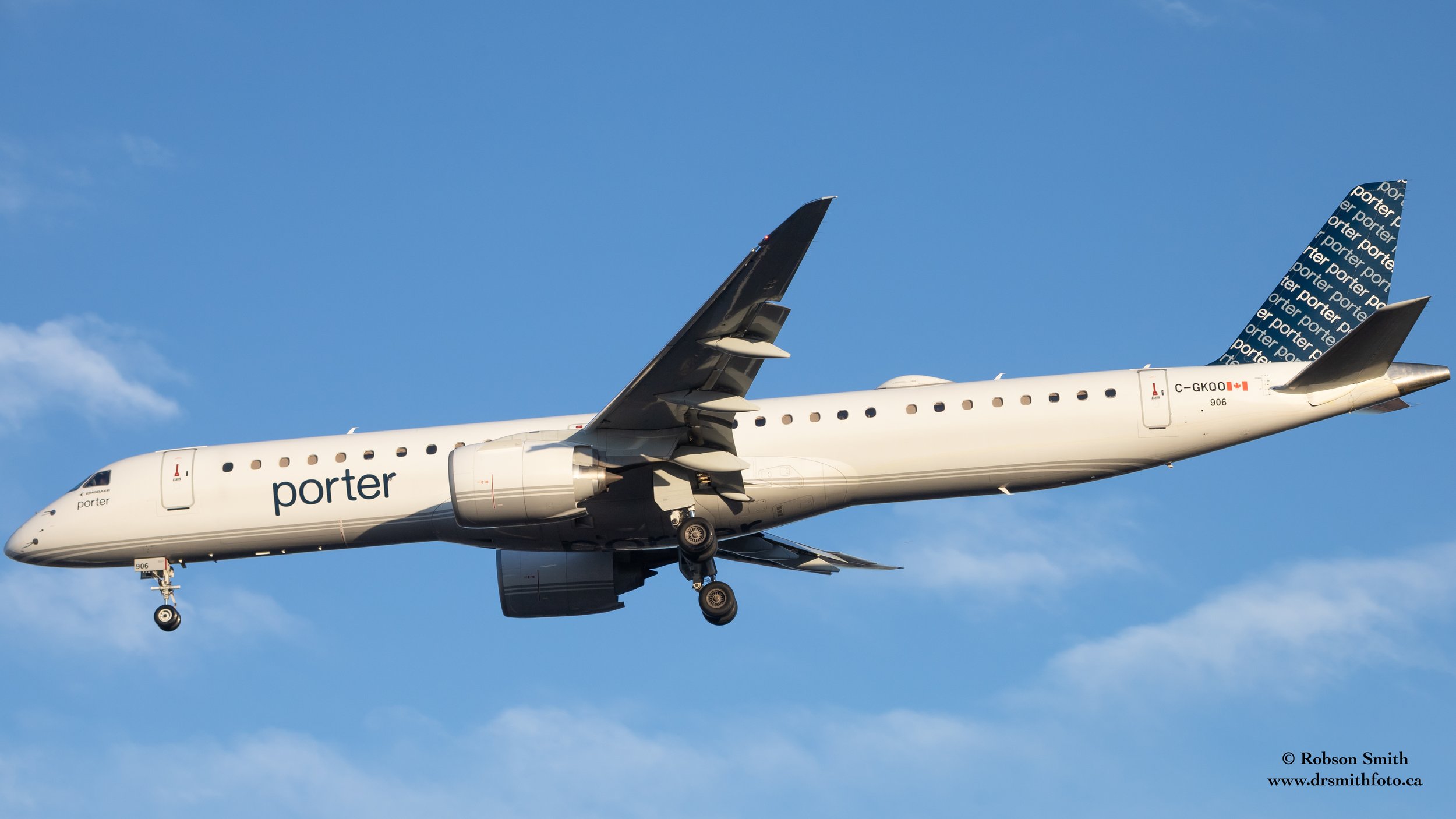United Airlines
In 1919, the Boeing Airplane Company completed its first commercial (mail delivery) flight. Boeing's success created a passenger subsidiary, United Aircraft Corp., in 1929. In 1930, "United Airlines" was founded as a parent company, later dissolving in 1934 into United Airlines, Boeing, and United Aircraft (today, United Technologies). Recently, in 2010, United merged with Continental Airlines, another US mega carrier, which created the world's largest airline, taking United's name and an updated livery from Continental.
United received the world’s first Boeing 747 in August 1970, pioneering the way for history’s most iconic commercial jetliner. In the coming decades, United also became the launch customer for the Boeing 767-200 aircraft, another best seller, in 1982, and the Boeing 777, the most popular wide body today, in 1995. United also cememted itself as the first airline to serve all US states with commercial airports in 1984. Then, in 1997, the company co-founded Star Alliance, one of the largest airline alliances in the world.
The plane shown is a Boeing 787-9 (N24979) arriving at London Heathrow International Airport (LHR) from Denver International Airport (DEN).
Air Canada Cargo
Air Canada Cargo is as old as its parent, with the first flight of Trans Canada Airlines (TCA) in 1937 carrying mail between Vancouver and Seattle. TCA began official cargo flights in the 1950s, rebranded to Air Canada in 1965, and waited until 1977 to establish Air Canada Cargo officially. They operated dedicated cargo aircraft and leveraged the cargo hold on commercial flights. By the 1990s, Air Canada Cargo was withdrawn, although freight was still carried on commercial flights. In 2020, Air Canada Cargo was re-launched with dedicated Boeing 767 aircraft (retired Air Canada passenger aircraft).
Above is a Boeing 767-300(ER) (C-FTCA) arriving at Toronto Pearson (YYZ) from Chicago O’Hare International Airport (ORD)
Air Canada
Air Canada was founded in 1937 as Trans Canada Air lines (TCA), then a subsidiary of the Canadian National Railroad (CNR) under a federal mandate to provide Canada with a flag carrier. The company rebranded to "Air Canada" in 1965; however, serving a bilingual country, it has always been "Air Canada” in French. In 2001, Air Canada acquired Canadian Airlines, then Canada's second largest airline, a major blow to competition in the Canadian aviation market. Air Canada’s updated livery seen here was launched with the airline's 80th anniversary and Canada's sesquicentennial since Confederation in 2017.
Above is a Boeing 787-9 (C-FNOI) arriving at Toronto Pearson (YYZ) from Dublin Airport (DUB)
WestJet
Westjet, Canada’s second largest airline, was established in 1994 following the low cost model pioneered in the US. The airline expanded across Canada, helped by the demise of Canadian Airlines, absorbed by Air Canada in 2001. By 2015, WestJet acquired its first wide-body aircraft - the Boeing 767 - allowing it to launch frequent flights to Western Europe and compete with Air Canada. These ageing 767s were retired soon thereafter and replaced by Boeing 787 aircraft after this model proves successful, with the airline now servicing dozens of European Cities.
Above is a Boeing 787-9 (C-GURP) arriving at London Heathrow (LHR) from Calgary International Airport (YYC)
FedEx Express
FedEx Express, then Federal Express, launched in 1973, and quickly grew to dominate the American - and arguably global - air freight industry, now the largest cargo airline in the world. The company operates a mammoth fleet of more wide-body, civil aircraft than most airlines in the world, freight or commercial, with destinations to almost every country on Earth. Furthermore, with over 11 million pounds of air freight moved daily, FedEx has an aircraft landing roughly every 40 seconds. Additionally, FedEx was the launch customer of the Boeing 777-F in the US and its largest operator.
Above is a McDonnell Douglas MD-11F (N607FE) arriving at Toronto Pearson (YYZ)
Air Transat
Air Transat was founded in 1986 with flights a year later, and it is currently the only major Canadian Airline founded in Quebec and the third largest airline in Canada. The company provides seasonal routes to southern destinations during the Canadian winter and transitions to mainly European destinations during the summer. It has rapidly increased its presence overseas, helped by the addition of 19 Airbus A321LRs. Today, Air Transat has earned its positive reputation, being dubbed the World's Best Leisure Airline in 2018 by the Skytrax Airline Awards and receiving similar recognition elsewhere.
Above is an Airbus A321LR (C-GOJC) arriving at Toronto Pearson (YYZ)
Air Canada Rouge
Air Canada Rouge, a subsidiary of Air Canada, was founded in 2011 to directly compete with Canada's other low-cost leisure airlines, like Air Transat, Sunwing, and Westjet (and later Flair, Lynx, Porter, and Swoop). With destinations as far away as Osaka, Japan, Europe, and South America, rouge operates over 60 aircraft - a 15 fold increase compared to its initial 4 planes. Interestingly, the name "Rouge" was chosen by a public naming contest, with citizens calling it very Canadian and easy to remember in both of Canada's official
Above is an Airbus A321-200 (C-GHQI) arriving at Toronto Pearson (YYZ)
JetBlue Airlines
TAP (Transportes Aéreos Portugueses) was founded in 1945, with a first flight from Lisbon to Madrid using a DC-3 aircraft. (TAP only inaugrated its first domestiv service (Lisbon-Ponto) in 1947.) Then, in the 1960s, TAP rapidly modernized its fleet with futeristic jets like the Boeing 707, 727, and Sud Aviation Caravel. In 1964, the airline flew its one millionth passenger, ane then, by 1967, TAP was the first European airline to operate only jet aircraft. Today, it is the largest operator of the efficient A330neo.
(The plane shown is an Airbus A350-900 (B-32A5) arriving at London Heathrow (LHR)from Beijing Capital International Airport (PEK).)
Caribbean Airlines
Caribbean Airlines is the national airline of the Republic of Trinidad and Tobago and Jamaica and the largest airline of the Caribbean islands. Launching in 2007, Caribbean Airlines superseded the country’s previous carrier, BWIA (British West Indian Airlines), which had operated in the Caribbean since 1937. The then new livery included a hummingbird on the tail, serving as a nod to Trinidad's recognition as the "land of the hummingbird". The design also presents the flag of CARICOM, a political organization uniting many Caribbean countries next to the flag of Trinidad and Tobago at the rear of the fuselage.
Above is a Boeing 737-800 (9Y-ANU) arriving at Toronto Pearson (YYZ) from Port of Spain Piarco International Airport (POS)
Flair Airlines
Flair Airlines was founded in 2005, serving as a Canadian low cost airline headquartered in Edmonton, Alberta. This outdated 737-400 jet was delivered to Alaska Airlines in 1998, later purchased by Flair in 2017. The airline has now completely phased out these aircraft in favour of the more modern 4th generation 737 family (737-800 Next Generation). As this is an old image (2019), the aircraft is sporting Flair's outdated livery. In 2019, this was updated to a simpler look and again in 2020 to better align with Flair Airlines slogan "Plane and Simple".
(The plane shown is an Airbus A350-900 (B-32A5) arriving at London Heathrow (LHR)from Beijing Capital International Airport (PEK).)
Arajet
Arajet was founded in 2022 and is the flag carrier of the Dominican Republic. The company has roots to the Dominican charter airline Dominican Wings founded in 2014. Beginning in 2018, that airline transitioned to a low-cost model and rebranded to Arajet in 2021. In 2023, Arajet launched flights between Toronto and Santo Domingo - the first Dominican airline to fly to Canada - part of a rapid route expansion. Upon the flight’s inauguration, Arajet partnered with Illuminati Drone Shows in Toronto to launch, according to the airline, the city’s largest ever drone show (showcasing their logo).
Above is a Boeing 737 MAX 8 (HL1101) named Los Haitises after the Dominican national park arriving at Toronto Pearson (YYZ) from Punta Cana International Airport (PUJ)
Sunwing
Sunwing is Canada's leading leisure airline and was founded in2 2002. The airline is Cuba's largest travel provider, sending 700,000 vacationers to the country each year and operates over 22,000 annual flights to nearly 75 destinations. Given their primary role as a winter holiday airline, Sunwing sends many of their aircraft to Europe to fly under the TUI group (which partners with Sunwing) during Europe’s busy summer months. In 2023, WestJet acquired Sunwing Airlines, raising concerns about a decided lack of competition in the Canadian aviation market.
Above is a Boeing 737-300 (C-GFEH) arriving at Toronto Pearson (YYZ)
Sunwing
Sunwing is Canada's leading leisure airline and was founded in2 2002. The airline is Cuba's largest travel provider, sending 700,000 vacationers to the country each year and operates over 22,000 annual flights to nearly 75 destinations. Given their primary role as a winter holiday airline, Sunwing sends many of their aircraft to Europe to fly under the TUI group (which partners with Sunwing) during Europe’s busy summer months. In 2023, WestJet acquired Sunwing Airlines, raising concerns about a decided lack of competition in the Canadian aviation market.
Above is a Boeing 737-300 (C-GFEH) arriving at Toronto Pearson (YYZ)
Swoop Airlines (Defunct)
Swoop Airlines was founded in 2017 as an ultra-low cost subsidiary of WestJet. It originally intended to compete against Flair Airlines, another Canadian low cost carrier, and was one of the first in a wave of new Canadian low cost carriers (Lynx, Canadian Jetlines, an expanded Flair), with only Flair remaining. The airline ceased operations in late 2023, with all assets set to be reabsorbed by WestJet following the ratification of a new union deal with its pilots which would see Swoop pilots given the same standing as WestJet pilots. This allegedly impaired Swoop’s ability to operate its ultra-low cost model.
Above is a Boeing 737-800 (C-FYPB) arriving at Toronto Pearson (YYZ)
AeroMexico
Aeromexico was established in 1934 as the private air company “Aeronaves de México.” By 1988, suffering from a dated fleet (average of 20+ years) and ineffective management, the airline declared bankruptcy, prompting the creation of a new corporate entity, "Aerovias de Mexico". This is the airline's corporate title; it has been known as Aeroméxico since 1972. Aeroméxico became the third airline in Latin America to fly regular flights to Asia, and since the demise of both competing carriers, Varig and VASP of Brazil, the carrier remains the sole Latin American airline with regular flights to Asia.
Above is a Boeing 737-800 (N825AM) arriving at Toronto Pearson (YYZ) from Mexico City Benito Juárez International Airport (MEX)
Porter Airlines
Porter Airlines was founded in 2006 as a short-haul Canadian airline based at the unique Billy Bishop Toronto Island Airport. The company provided service throughout the Canadian east coast and New England using a fleet of Bombardier DASH-8 Q400s. The airline has since expanded to Pearson using Embraer E195-E2 aircraft, allowing significant expansion into the United States and Western Canada. Toronto’s Island airport saw significant expansion due to Porter’s operations, with a new terminal and an underground pedestrian tunnel to the city opening allowing seamless connections to Toronto.
Above is an Embraer E195-E2 (C-GKXO) arriving at Toronto Pearson (YYZ) from Fort Myers Southwest Florida International Airport (RSW)
American Airlines
American Airlines, the largest airline by passengers carried and daily flights, dates to 1930 when 82 small airlines, the oldest from 1926, merged into American Airways. AA first flew in 1936 as American Air Lines and became the launch customer for the famous DC3 in 1936. In 1973, American Airlines became the first major US airline to hire a female pilot (flying the 727). Then, in 1998, the airline became a founding member of the Oneworld Alliance, now the world's third largest airline alliance. American merged with Us Airways in 2013 and acquired rival TWA - another American mammoth - in 2001.
Above is an Embraer ERJ-175 (N270NN) arriving at Toronto Pearson (YYZ) from Dallas Fort Worth International Airport (DFW)
United Airlines
United Airlines, the largest airline by fleet and destinations, stems from the Boeing Airplane Company (est. 1916). With a first mail flight in 1919 Boeing expanded into United Aircraft & Transport Corporation (UATC) in 1929. However, a US ban on joint manufacturing/airline companies in 1934 forced a split into “United Aircraft” and the “Boeing Airplane Company” (now, just “Boeing”) for manufacturing and “United Air Lines” for air services. United launched the popular 777 in 1995, co-founded the 1st global airline alliance, star-alliance, in 1997 and merged with Continental Airlines, a large US airline, in 2010.
Above is an Embraer ERJ-175 (N724YX) operated by Republic Airlines arriving at Toronto Pearson (YYZ) from Newark Liberty International Airport (EWR)
Delta Airlines
Delta Airlines, the largest airline by revenue, honours the Mississippi “Delta,” near which “Huff Daland Dusters,” the world’s first aerial crop-dusting company, was founded in 1925. They entered the U.S. passenger market in 1928 as Delta Air Services. In 1955, Delta launched the revolutionary hub and spoke system and later launched the famous DC-8, Convair 880, and DC-9. Delta then merged with many notable airlines: Northeast Airlines (est. 1931) in 1972, Western Airlines (est. 1925) in 1987, and Northwest Airlines (est. 1926) in 2010. Delta co-founded SkyTeam, one of the 3 major airline alliances, in 2000.
Above is an Embraer ERJ-175 (N292SY) operated by SkyWest Airlines arriving at Toronto Pearson (YYZ) from Minneapolis-Saint Paul International Airport (MSP)
BermudAir
BermudAir is the flag carrier of Bermuda and was recently founded in 2023. The company provides premium quality flights between Bermuda and the Eastern United States and Canadian provinces. The airline is unique in experiencing an uncharastically quick certification time between founding and first flight at under a year. This required logistic hurdles to be overcome; for instance, both Embraer E175s of their fleet are taken from FlyBe, a now defunct British low cost carrier. BermudAir’s colourful livery takes inspiration from the saturated architecture and diverse ecology found on the island of Bermuda.
Above is an Embraer E175 (VQ-BLU) named “Topsey” arriving at Toronto Pearson (YYZ) from St. George L.F. Wade International Airport (BDA), Bermuda
Avianca
Avianca is a group of eight Latin American flagship airlines, each of which uses the "Avianca" title followed by the flag country of the airline for their names. The modern Avianca group was created in 2009 when TACA, the leading airline in South America at the time, and Avianca Colombia merged, forming a new pan-Latin American Avianca. Interestingly, Avianca Columbia, the national carrier of Columbia when in operation, was formed December 5th 1919 as SCADTA, making Avianca, due to the merger in 2009, the second oldest airline in the world behind KLM.
Above is a Boeing 787-9 (N79IAV) arriving at London Heathrow (LHR) from Bogota El Dorado International Airport (BOG)
Royal Canadian Air Force
While not a commercial airline, still quite interesting… This McDonnell Douglas F/A-18 Hornet is seen arriving during the Canadian International Air Show held annually on Labour Day weekend. The Royal Canadian Air Force was established in 1924 and has seen operation in a number of historical conflicts, such as the second world war (Battle of the Atlantic, Western front), Korean War, and the war in Afghanistan. Recently, the Canadian government expressed interest in acquiring 88 F-35s to replace its ageing F-18s.
The plane shown is a McDonnell Douglas CF-188B arriving at Toronto Pearson (YYZ) during the 2021 Canadian international Airshow
Canadian North
TAP (Transportes Aéreos Portugueses) was founded in 1945, with a first flight from Lisbon to Madrid using a DC-3 aircraft. (TAP only inaugrated its first domestiv service (Lisbon-Ponto) in 1947.) Then, in the 1960s, TAP rapidly modernized its fleet with futeristic jets like the Boeing 707, 727, and Sud Aviation Caravel. In 1964, the airline flew its one millionth passenger, ane then, by 1967, TAP was the first European airline to operate only jet aircraft. Today, it is the largest operator of the efficient A330neo.
(The plane shown is an Airbus A350-900 (B-32A5) arriving at London Heathrow (LHR)from Beijing Capital International Airport (PEK).)
Canadian North
TAP (Transportes Aéreos Portugueses) was founded in 1945, with a first flight from Lisbon to Madrid using a DC-3 aircraft. (TAP only inaugrated its first domestiv service (Lisbon-Ponto) in 1947.) Then, in the 1960s, TAP rapidly modernized its fleet with futeristic jets like the Boeing 707, 727, and Sud Aviation Caravel. In 1964, the airline flew its one millionth passenger, ane then, by 1967, TAP was the first European airline to operate only jet aircraft. Today, it is the largest operator of the efficient A330neo.
(The plane shown is an Airbus A350-900 (B-32A5) arriving at London Heathrow (LHR)from Beijing Capital International Airport (PEK).)
Glencore International
This aircraft is operated by Glencore International, a mining company with routes to the Falconbridge “Raglan” nickel mine in 1995 in northern Quebec, which is accessible by ship less than eight months per year. there is no other access other than air, served by this aging Boeing 737-200C (manufactured in 1979). As a combi-737, it transports both passengers (mining employees) and cargo concurrently and fares well in tough conditions; a gravel deflector underneath the forward wheel and vortex disapators on each engine prevent debris from entering the engines during gravel landings.
Above is a Boeing 737-200 (C-FFAL) arriving at Toronto Pearson (YYZ)
Royal Canadian Air Force
While not a commercial airline, still quite interesting… This McDonnell Douglas F/A-18 Hornet is seen arriving during the Canadian International Air Show held annually on Labour Day weekend. The Royal Canadian Air Force was established in 1924 and has seen operation in a number of historical conflicts, such as the second world war (Battle of the Atlantic, Western front), Korean War, and the war in Afghanistan. Recently, the Canadian government expressed interest in acquiring 88 F-35s to replace its ageing F-18s.
The plane shown is a McDonnell Douglas CF-188B arriving at Toronto Pearson (YYZ) during the 2021 Canadian international Airshow

























